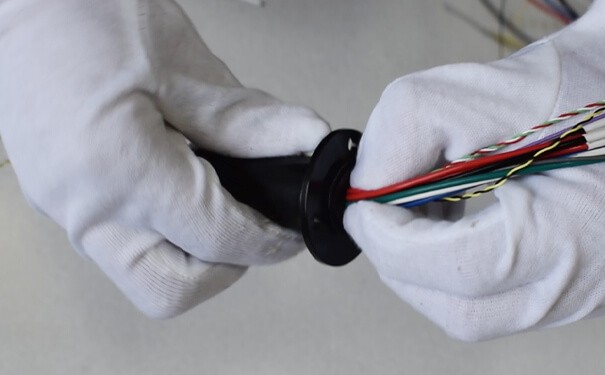The world of electricity is a wonder to behold, playing a pivotal role in the daily lives of billions and serving as the heart of modern technological advancements. Its essence is communicated through an elaborate lexicon of symbol of electric—each one a concise representation of a function, a component, or a relationship within an electrical system. This article embarks on an exploratory journey to unveil the stories and significance behind these symbols that energize our world.
Unraveling the Mysteries of the Symbol of Electric
Electricity: it powers our homes, runs our devices, and fuels myriad innovations shaping our future. Yet, the language through which we diagram and understand these complex systems–the “Symbol of Electric”–remains a mystery to many. In this introduction, we embark on a journey to demystify these symbols, revealing not only their meanings but also the critical role they play in our technologically driven world.
The Language of Electricity
Electrical symbols serve as the alphabet and grammar of electrical engineering and circuit design. Think of them as the shorthand that engineers, technicians, and builders use to communicate complex instructions in a simple, graphical form. These symbols represent physical components, like resistors, capacitors, and inductors, as well as abstract concepts, such as currents and voltages, allowing for the creation of schematic diagrams that map out electrical circuits without the need for verbose descriptions.
Understanding electrical symbols is akin to learning a new language. But rather than words and sentences, this language uses lines, dots, and squiggles to convey ideas. For those in the field of electronics or engineering, it’s an essential language. However, as our daily lives become more intertwined with electronic devices and systems, a basic understanding of these symbols becomes useful, if not necessary, for a much wider audience.

Why Electrical Symbols Matter in the Modern World
In our modern era, electricity is the lifeblood of technology, and yet, its workings often go unnoticed by the average person—hidden behind walls, within devices, or under the hoods of cars. But as our reliance on technology grows, so does the importance of understanding its underpinnings. Awareness of electrical symbols and their meaning empowers not only those who design and repair electrical systems but also end-users in making informed decisions about the technologies they use daily.
Consider the renewable energy sector as an example. Solar panels and wind turbines convert natural energy into electrical power, handled and redirected by intricate networks of converters and inverters. For those installing, maintaining, or even using this technology at home, recognizing the associated symbols can demystify how these systems harness and distribute power, contributing to more efficient use and troubleshooting of renewable energy solutions.

Similarly, the rise of smart homes and IoT (Internet of Things) gadgets has brought the electrical world closer to the layperson. The ability to read and understand a simple circuit diagram can be the difference between utilizing these technologies to their full potential or being left at a disadvantage.
Moreover, education in electrical symbols reinforces safety. It helps people recognize potential hazards in the devices and infrastructure around them, encouraging safer interactions with electrical systems.
The crux of our modernity hinges on our ability to understand, interact with, and innovate upon the electrical foundations laid by generations of engineers and scientists. This section does not merely introduce a set of symbols; it invites you into a dialogue with the electric essence of the contemporary world—a dialogue that fuels invention, resolves problems, and, most importantly, enlightens.
As we progress through this article, we will use real-world examples and case studies to illustrate the practical applications of these symbols, dispel common myths and misconceptions, and offer advice on navigating the electrified landscape of our modern world. Whether you’re a budding engineer, a DIY enthusiast, or simply a curious mind, understanding the “Symbol of Electric” opens a window into the invisible forces shaping our lives and offers tools to engage more deeply with the technology that defines our age.
The Evolution of the Symbol of Electric
The history of electrical symbols is a fascinating journey through time, reflecting not only advancements in technology but also in human understanding and communication. It’s a narrative that parallels the evolution of electricity itself, from a mysterious force of nature to the cornerstone of modern civilization. This chapter delves into the origins and evolution of the “Symbol of Electric”, shedding light on how these abstract representations came to be the universal language of electrical and electronic systems.
The Dawn of an Electric Age
The Early Pioneers
The story of electrical symbols begins in the laboratories and notebooks of the early pioneers of science. Figures such as Benjamin Franklin, Alessandro Volta, and Michael Faraday laid the groundwork for what would become the field of electrical engineering. Their discoveries introduced the world to electrical charges, currents, and magnetic fields—concepts that needed to be communicated clearly and effectively.
As these scientific explorers sought to describe their findings, they began creating simple diagrams to represent their experiments and theories. These early diagrams were rudimentary, often inconsistent, and varied greatly from one scientist to another. However, they represented the first attempts at a graphical language for electricity—a precursor to the symbols used today.
From Chaos to Clarity
The inconsistency in early electrical diagrams posed a significant challenge for the burgeoning field. As more scientists and engineers began to work with electrical circuits, the need for a standardized language became clear. It was essential for scholars and professionals to understand each other’s work without ambiguity or misinterpretation.
Standardization: The Birth of Modern Electrical Symbols
The Role of Professional Bodies
By the late 19th and early 20th centuries, with the proliferation of electrical technology and the acceleration of innovation, the need for standardization of electrical symbols became pressing. Professional bodies and institutions, recognizing the need for a common language, began the work of defining and disseminating standardized symbols. The Institute of Electrical and Electronics Engineers (IEEE) and the International Electrotechnical Commission (IEC) emerged as key players in this process, proposing sets of symbols that would be universally recognized.
Why Standardization Matters
The development of standardized electrical symbols was not merely a matter of convenience— it was crucial for the advancement and safety of electrical engineering. Standardized symbols ensured that engineers and technicians, regardless of their location or background, could understand circuit diagrams. This universality was particularly vital as the world became more interconnected, and as complex projects required collaboration across borders and disciplines.
Real-World Impact and Evolution
Beyond Borders: International Collaboration and Innovations
The adoption of standardized electrical symbols facilitated unprecedented levels of international collaboration and innovation. Projects like the International Space Station, where multiple countries and agencies must work together seamlessly, underscore the importance of a common electrical language. The symbols that began as simple representations in the notebooks of early scientists have evolved into a robust vocabulary capable of describing the intricacies of modern technology, from smartphones to satellite systems.
Adaptation and Future Directions
As technology advances, so too does the language of electrical symbols. The transition from analog to digital brought about new symbols to represent digital gates and functions. Today, as we stand on the brink of breakthroughs in areas such as renewable energy and quantum computing, the symbols of electric continue to evolve.
Electrical symbols, much like the technology they represent, are not static; they grow and change to meet the needs of each new generation of engineers and scientists. And as we look towards the future, one thing remains clear: the symbols that began as simple illustrations are now foundational to our understanding and utilization of electricity.
Addressing Common Questions
One common question is how individuals without a background in electrical engineering can begin to understand these symbols. The answer lies in education and resources. Many online tutorials, textbooks, and courses are designed to introduce novices to the world of electrical symbols, starting with the most basic and gradually unveiling the more complex.
What is the evolution of electrical symbols does more than just provide historical context—it illuminates the path of human innovation and cooperation. As we continue to explore and expand the boundaries of what is possible, the “Symbol of Electric” will no doubt continue to be at the heart of our journey, encapsulating the essence of our electrical endeavors.
Deciphering the Symbol of Electric
Embarking on the journey of understanding electrical symbols, we transition from their storied history to the practical aspect of deciphering these cryptic icons. This chapter shines a light on the most commonly used electrical symbols and provides actionable tips for reading symbols on circuit diagrams. It’s akin to learning the alphabet before composing sentences; this foundational knowledge is critical for anyone looking to navigate the electrically engineered world around them.
The Alphabet of Electricity
Electrical symbols are the building blocks of circuit diagrams—blueprints that layout how electrical components are connected. Let’s introduce some of the basic and most frequently encountered symbols:
- Resistor: Represented by a zigzag line, resistors are fundamental components that control the flow of electrical current in a circuit.
- Capacitor: Illustrated as a pair of parallel lines (sometimes with one curved line), capacitors store and release electrical energy.
- Inductor: Depicted by a series of loops or a coil, inductors store energy in a magnetic field when electrical current flows through them.
- Diode: Symbolized by an arrow pointing towards a line, diodes allow current to flow in one direction only.
- Transistor: There are various symbols for transistors, generally consisting of three terminals and depicting the control of current flow.
- Battery: Shown as a pair of lines (one longer than the other), the battery symbol represents a power source with a positive and a negative terminal.
Each of these symbols represents an essential component within a circuit, playing a unique role in its functionality.
Tips for Reading Symbols on Circuit Diagrams
Deciphering a circuit diagram requires more than just knowing what each symbol means; understanding how they connect and interact within the circuit is vital. Here are some tips to guide you through this process:
Start with the Power Source
Identify the power source first (usually a battery or power supply symbol). It sets the stage for understanding the direction of current flow and the initial input of energy into the circuit.
Follow the Path
Trace the circuit from the positive to the negative side of the power source. This practice helps to understand how current travels and which components it encounters along its path.
Look for Labels
Components are often labeled with values or additional information (e.g., resistance in Ohms for resistors). These details are crucial for comprehending the circuit’s intended function.
Identify Parallel and Series Connections
Recognizing whether components are connected in series (in a single path) or parallel (in multiple paths) can provide insights into the circuit’s behavior, such as how voltages and currents are distributed.

Utilize Color Coding
Some schematics use color coding to distinguish different types of wires or signals (e.g., ground wires might be green). Becoming familiar with these conventions can aid in your understanding.
Real-World Application: A Case Study
To contextualize the importance of reading electrical symbols, consider the case of troubleshooting a home solar panel system. A homeowner notices their solar panels are not producing the expected power output. By understanding the symbols representing the system’s components (solar cells, inverters, batteries), they can review the electrical schematic of their installation.
Identifying and following the circuit path from the panels to the inverter and finally to the battery storage, the homeowner can check if each component is correctly linked and functioning. This process could reveal potential issues such as a disconnected inverter or a faulty battery—knowledge that significantly streamlines the troubleshooting process.
Addressing Common Questions
One common misconception is that you need to be an engineer to read circuit diagrams. While it’s true that complex circuits require a deeper understanding, many schematics, especially for consumer electronics and simple projects, can be understood with basic knowledge of electrical symbols.
Another question often raised is regarding the relevance of learning to read these symbols in an age dominated by wireless technology and software. The truth is, even the most advanced technological systems rely on fundamental electrical principles represented by these symbols. Understanding them not only demystifies how devices work but also nurtures an appreciation for the intricacies of design and innovation.
In wrapping up, the mastery of electrical symbols doesn’t happen overnight, but the journey of learning brings with it the ability to engage with the technological world more meaningfully. Whether troubleshooting a solar panel system or simply satiating curiosity about how gadgets work, the proficiency in reading the “Symbol of Electric” enriches both professional and everyday lives.
The Language of Circuits: Speaking with the Symbol of Electric
As we venture further into the world of electrical design and interpretation, understanding the utility of electrical symbols in communication becomes increasingly pertinent. This chapter elaborates on the way these symbols serve as the dialect of electrical systems and the nuances of different types of diagrams where they are employed. Each symbol is a word; each circuit, a sentence; and each diagram, a story. Let’s learn how to read these stories.
Communicating Complex Concepts
Electrical symbols are more than static images on a page; they are dynamic tools used by engineers, technicians, and hobbyists to convey complex electrical concepts in a digestible form. Like notes in a piece of music, these symbols provide instruction and information about how components come together to create harmony in an electrical system.
- The Interpreter: Each symbol is a concise interpreter of an electrical component’s function, turning pages of technical description into a simple icon.
- The Blueprint: Together in a circuit diagram, these symbols illustrate the blueprint of an electrical system, outlining every connection and predicting the path of current flow.
- The Storyteller: Beyond mere representation, these symbols tell the story of the system’s potential behavior under various conditions, allowing one to predict circuit responses without physical experiments.
Specifics of Schematic and Wiring Diagrams
In the realm of circuit documentation, schematic and wiring diagrams are the primary media through which electrical symbols speak. While they both utilize the same symbols, they serve quite different purposes in the storytelling of electric circuits.
Schematic Diagrams: The Conceptual Map
A schematic diagram is akin to a conceptual map of an electrical or electronic circuit. It uses symbols to represent the components and lines to represent the connections between them.
- Abstraction Over Accuracy: The physical placement of components on a schematic diagram is not indicative of how they will be laid out in actuality. It’s more focused on clarity and the flow of the circuit than on physical arrangement.
- Logical Connections: The primary concern is how components are logically connected. Schematics allow one to follow circuit functions without the clutter of physical details.
Wiring Diagrams: The Physical Counterpart
Conversely, a wiring diagram represents the physical connections and layout of an electrical system. It is a literal depiction of where wires and components are positioned within a setup.
- Spatial Organization: Wiring diagrams are invaluable in installations and repairs, as they convey the exact spatial arrangement and connection paths between circuitry.
- Color Coding and Size: They often include specifics like wire color coding and sizes, important for the actual making or troubleshooting of a system.
Real-World Example: The Automated Home
To understand the real-world implications of these diagrams, consider the example of designing an automated home system, controlling lights, heating, and security.
- Schematic Diagram for Design: The project begins with a schematic diagram. Designers use this to map out the connections between sensors, switches, and relays, disregarding where each will sit in the physical space of the home. The schematic ensures that the system logic is sound and that all components are appropriately connected for the desired control.
- Wiring Diagram for Installation and Maintenance: Once the design is verified, a wiring diagram is created for the installers. It guides them on where each wire runs, where connections should be made, and helps in the diagnostics of issues post-installation.
Addressing Common Questions
A frequent question is whether one needs to be able to read both schematic and wiring diagrams. For a hobbyist or DIY enthusiast, understanding schematics may suffice for small projects. However, in professional settings, the ability to interpret both is crucial.
Another common inquiry is about the existence of digital tools to assist in diagram interpretation. Indeed, there are various software options that not only help in reading but also in creating electrical schematics and wiring diagrams, with many offering features like error-checking and simulation.
Envisioning these diagrams as more than mere collections of symbols, but rather as stories and maps, can transform the way we perceive and engage with them. They are not just technical jargon but are the language in which the electrified aspects of our world are communicated, shared, and preserved. Through the “Symbol of Electric”, we reveal complexities, share knowledge, and pass on technological legacies.
The Symbol of Electric in Safety and Standards
Electrical symbols are not merely shorthand for engineers and electricians. They are the crucial lingua franca for safety and standardization across the globe. This chapter delves into the critical role these symbols play in ensuring the safe design, operation, and maintenance of electrical systems, plus an overview of the international standards that govern them.
The Role of Electrical Symbols in Ensuring Safety
Understanding and using electrical symbols correctly is fundamental to preventing electrical accidents, be they minor shocks or catastrophic fires. Symbols serve as a universal language, breaking down barriers in global workplaces and ensuring consistent practices worldwide.
- Clarity in Design and Construction: Electrical symbols help clarify design intentions, leaving less room for error in constructing electrical systems. They ensure that complex circuits are understood without ambiguity, reducing the risk of misinterpretation that can lead to accidents.
- Educational Tool for Safety: Learning about electrical symbols is a fundamental part of safety training for professionals. Recognizing symbols for components like earth ground, frame ground, or dangerous voltages can prevent unsafe interactions with electrical systems.
- Troubleshooting and Maintenance: For maintenance staff, knowing electrical symbols helps in quickly identifying components and understanding how they’re connected, which is crucial for safely diagnosing and fixing issues.
A poignant case study illustrating this is the implementation of new safety symbols for arc flash hazards in electrical panels. This evolution in symbology has heightened awareness and preventative practices, significantly reducing injuries related to arc flashes in industrial settings.
International Standards for Electrical Symbols
Electrical systems don’t operate in isolation—global projects and products necessitate a common understanding of electrical symbols. This led to the development of International Standards, ensuring that anyone, anywhere, can read and interpret these symbols accurately.
- The IEC 60617 Standard: Published by the International Electrotechnical Commission (IEC), this standard defines graphical symbols for use in electrotechnical diagrams. It is widely adopted and recognized as the authoritative source for symbols worldwide.
- Region-Specific Adaptations: Though IEC standards are globally recognized, regions like North America have adaptations (e.g., ANSI standards) that dovetail with IEC while addressing specific domestic considerations. Professionals often need to be conversant with both.
- Ongoing Evolution and Challenges: As technology advances, standards bodies regularly update their documents to include symbols for new devices or practices. Staying abreast of these changes is a challenge for professionals but essential for ensuring global safety and interoperability.
Innovations and the Future of the Symbol of Electric
With a solid grounding in the historical, practical, safety, and standardization aspects of electrical symbols, it’s now time to gaze into the crystal ball and see where these symbols might lead us in the future. This chapter uncovers the impact of advancements unfolding in the digital and smart technology environments, alongside speculations about what the future may hold for the “Symbol of Electric.”
Modern Advancements Incorporating Electrical Symbols
Electrical symbols have evolved simultaneously with our understanding of electricity and its applications. More than ever, the rapid evolution and complex intersections of technology have seen these symbols find homes in new and exciting spaces.
- Smart Devices and Internet of Things (IoT): Right from smart homes to wearable technology, the IoT revolution has seen electrical symbols employed extensively in designing a multitude of interconnected gadgets. These symbols underline the interplay of sensors, actuators, and data processing units that enliven our everyday devices.
- Electronic Design Automation (EDA): Modern tools for circuit design and simulation, part of EDA, frequently use electrical symbols. These computer-aided design tools allow for quick construction of complex circuit diagrams, bolstering engineers’ efficiency and precision.
- Artificial Intelligence (AI) and Machine Learning (ML): In AI and ML, electrical symbols are often used to represent the structure of neural networks and other complex algorithms. Understanding these symbols offers insights into the inner workings of these revolutionary technologies.
A case study in point is the emergence of smart homes wired for automation. The electrical symbols that describe a simple light switch in a traditional electrical schematic have evolved into symbols for motion sensors and timed relays in these modern automated setups. These symbols encapsulate the nuances given by time, automation levels, machine-to-machine interaction, and much more.

Speculations about Future Developments
Looking beyond the now, the future landscape of electrical symbols is far from staid and predictable. With new technological frontiers developing at unprecedented rates, the electrical symbol dictionary is set for exciting expansions.
- Influence of Quantum Computing: As we approach the quantum computing age, new symbols may be needed to represent the principles of superposition and entanglement, distinct from conventional digital logic symbols.
- Nano Electronics and Bio Electronics: These emerging fields will likely introduce symbols for components that are starkly different from traditional resistors, capacitors, and transistors.
- Integration with Augmented Reality (AR) and Virtual Reality (VR): We may see the development of 3-dimensional or animated electrical symbols that can be manipulated and observed in real-time within AR or VR environments.
Hands-On with the Symbol of Electric
Understanding the language of electrical symbols is only the beginning. The real fun starts when we utilize this newfound knowledge to create, innovate, and explore. This chapter provides a hands-on exercise to apply the concepts of electrical symbols and additional resources for further learning, practice, and discovery.
DIY Project: Constructing a LED Circuit
Building a basic LED (Light Emitting Diode) circuit can be a great initiation into the practical application of electrical symbols. We’ll use a simple schematic diagram using fundamental electrical symbols, including the power supply, resistor, LED, and connecting wires. As you assemble the circuit, you will explore the significance of each symbol and how it contributes to the whole.
- Materials Required: A LED light, a 9V battery (power supply), a 470 Ω resistor, some insulated copper wires, and a breadboard.
- Constructing the Circuit: First, study the schematic diagram that represents the circuit using electrical symbols. It helps understand how components are connected. Next, using the breadboard, connect components according to the diagram. Take caution when working with electrical components.
Once you’ve completed your circuit, connect the power source. If done correctly, your LED should light up, signifying a job well done!
This exercise should serve to solidify your understanding of electrical symbols and their correspondence to real components. It should also underscore the necessity of accurate representation for the successful implementation of a circuit.
Resources for Further Learning and Practice
Once you’ve caught the bug to build and create using your knowledge of electrical symbols, here are resources to support your learning journey:
- Educational Platforms: Websites like Coursera, Khan Academy, and MIT OpenCourseWare offer free courses on electricity and electronics. They provide in-depth knowledge and have modules specifically focused on electrical symbols.
- Interactive Simulators: Tools such as CircuitLab, Tinkercad Circuits, and iCircuit allow you to build and test virtual circuits, honing your understanding of symbols and their use in practical diagrams.
- Books and Manuals: Publications like “The Illustrated Dictionary of Electronics” and “The ARRL Handbook for Radio Communications” offer comprehensive coverage of electrical symbols. They also provide additional context and details about each symbol’s use and history.
- Community Involvement: Get involved in maker communities, both online (like instructables.com, makezine.com) and offline (local maker fairs or tech clubs). These platforms offer a fusion of learning, sharing, and hands-on experience.
Embracing the Symbol of Electric in Our Lives
As we bring the curtain down on our enlightening journey through the world of electrical symbols, it’s important to reflect on the key insights and understandings we’ve garnered. Electrical symbols are more than just the esoteric scrawls of technocrats; they are the building blocks of our modern, electrified world. This conclusion will articulate the essential nature of these symbols and inspire you to continue the journey of learning.
The Integral Role of Electrical Symbols
Electrical symbols are ubiquitous—embedded in the devices we use every day, the homes we live in, and the global infrastructure that holds our society together. They are the DNA of electrical technology, embodying its function and connectivity. Throughout our exploration, we’ve seen how symbols have shaped the past and are undeniably crafting our future.
- Enhanced Understanding: Recognizing these symbols unravels how gadgets operate, how homes are wired, and how energy is channeled. This comprehension is invaluable for both professionals and laypeople who wish to navigate the electrified aspects of their environment intelligently and safely.
- Innovation and Collaboration: The standardized language of electrical symbols catalyzes innovation and facilitates collaboration across disparate fields of expertise. From a rough sketch on a napkin to the complex blueprints for smart cities, these symbols are crucial for bringing ideas to fruition.
These are not just static icons on a page; they represent a dynamic, continually evolving dialogue between innovation, safety, and functionality.
A Call to Lifelong Learning
In a world where technology endlessly marches forward, the encouragement to keep learning cannot be overstated. Electrical symbols, though seemingly small, are a testament to the leaps we’ve made as a society. Their recognition and knowledge pave the way for responsible and informed manipulation of the physical world.
- Continued Education: Even as this guide ends, your educational odyssey should not. Embrace every opportunity to learn more about electrical symbols and their applications. Whether through formal education, hands-on projects, or engaging with online communities, keep your curiosity alight.
- Awareness and Appreciation: As a part of a technologically interconnected society, recognizing the significance of electrical symbols is to appreciate the underpinnings of our daily lives. It is to acknowledge the elegance and efficiency of designs that power everything from our coffee makers to our computers.
Embracing the Charge
We have traversed the spectrum from the rudiments of electric pictograms to actual implementation and beyond. These explorations have contextualized the omnipresence of electrical symbols in our everyday life. Reminiscent of a common language, they allow for an unseen conversation between countless devices, technologies, and indeed, people, shaping the fabric of modern civilization.
So, as we part ways, I encourage you to keep exploring, tinkering, and most importantly, understanding. Pay homage to the noble “Symbol of Electric” by recognizing its critical role in past and contemporary times. Remember, every enlightened mind serves as a node in this vast network of electric communication, keeping the current of discovery, innovation, and understanding forever flowing.
See What We Can Do

